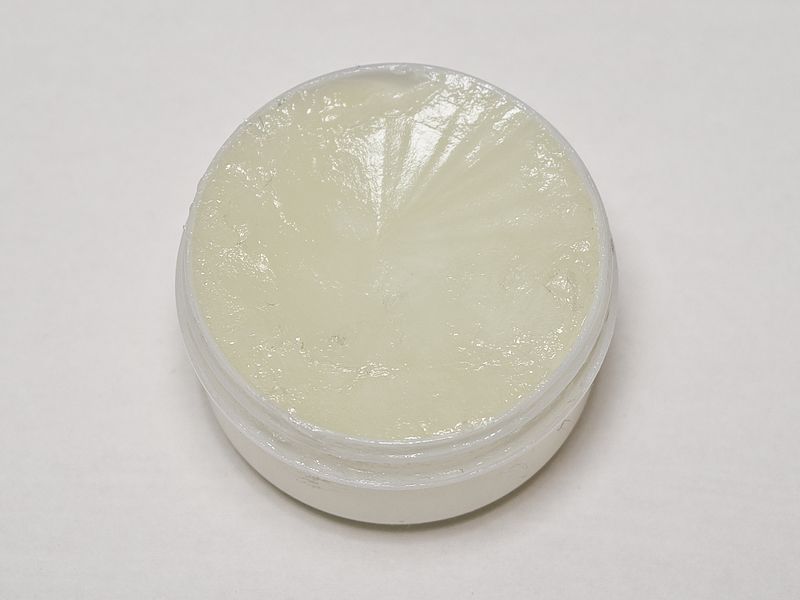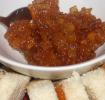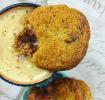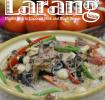Do you know that Vaseline and Vicks VapoRub had been found to cause lipoid pneumonia? Read on… Lipoid pneumonia is an inflammation in the lung, which resulted from inhaling a noninfectious foreign substance. These substances are contributed by the following: petroleum jelly, mineral oil, animal oil or vegetable oil. If left untreated, lipoid pneumonia may lead to respiratory failure, which is fatal. A study by Brown, et al., in 1994 concluded an unexplained lung disease (lipoid pneumonia) of a woman caused by her long history of applying Vaseline petroleum jelly inside her nose.
Another research reported in Madrid, Spain (published 2012 by Gorospe, et al) of a 67-year old female farmer suffering from lipoid pneumonia admitted that she had been applying Vaseline petroleum jelly to her tracheostomy or her "breathing tube" in order to moisturize the area around the stoma. Another patient reported suffering from lipoid pneumonia is a 56 year old poorly controlled epileptic, whose mother regularly applied Vicks Vaporub (mentholated petroleum jelly) into each nostril during grand mal seizures (Abdullah et al., 1999). According to John C. Wolf, D.O.Associate Professor of Family Medicine Ohio University College of Osteopathic Medicine: “In general terms, petroleum jelly is safe to use. However, there is a potential problem from prolonged use. This problem arises because the petroleum jelly doesn’t just stay in the nose but rather migrates to other parts of the body. Petroleum jelly usually drains out of the back of the nose with the normal nasal secretions and is then swallowed. While this is probably not a problem for you because of the small amount involved, petroleum jelly in the digestive system can reduce the number of vitamins that your body absorbs. However, for those that use mineral oil -- a similar type of petroleum -- as a laxative on a frequent basis, the risk is much greater.” II. BREAST CANCER: BROUGHT TO YOU BY POLYCYCLIC AROMATIC HYDROCARBONS (PAHs) IN PETROLEUM AND ITS PRODUCTS Just recently, petroleum and its products had been found to be one of the sources of polycyclic aromatic hydrocarbons (PAHs) pollutant, which causes mammary cancer in rodents, and therefore a possible breast carcinogen in humans (Gammon et al., 2002; Martins et al., 2004).
Rundle et al., 2000 demonstrated the significant relationship of PAH to the development and progression of breast cancer. Similar research result was demonstrated by Jeffy et al., 2002. Bonner et al., 2005 research suggested that exposure of PAH in early life may increase the risk of postmenopausal breast cancer. Other forms of PAHs have caused cancer of the skin, lungs,stomach, liver and bladder in laboratory mice or rats.
Finally, the European Union has banned the use of petrolatum because of its link to various forms of cancer in humans. In the US, however, petrolatum is freely used without further regulations on its purity for use in human’s personal care.
So, are you still using that petroleum jelly on your baby’s butt? Think about it. Additionally, if you are using such product on your nose/mucous areas, please STOP. It will make you SICK. I would consider it unhealthy as well to vaporize petroleum-based product in the bedroom, just to make sure of avoiding PAH pollutant. I can live without Vicks, Vaseline and any other petroleum-based products. There are a number of healthier and more natural alternatives around, and I will keep doing more research and share them with you.
Sources:
The PetroIeum HPV Testing Group. 2002. TEST PLAN WAXES AND RELATED MATERIALS CATEGORY. http://www.epa.gov/hpv/pubs/summaries/wxrelmat/c13902tp.pdf
Report on Carcinogens, Twelfth Edition (2011). Mineral Oils: Untreated and Mildly Treated.http://ntp.niehs.nih.gov/ntp/roc/twelfth/profiles/MineralOils.pdf
Katarina L. 2007. Polycyclic Aromatic Hydrocarbons. http://toxipedia.org/display/toxipedia/Polycyclic+Aromatic+Hydrocarbons
Bartlett, G., MD. 2012. Aspiration Pneumonitis and Pneumonia. http://www.merckmanuals.com/professional/pulmonary_disorders/pneumonia/aspiration_pneumonitis_and_pneumonia.html
Brown et al., 1994. Exogenous Lipoid Pneumonia Due to Nasal Application of Petroleum Jelly. US National Library of Medicine National Institutes of Health
Gorospe et al., 2012. Exogenous lipoid pneumonia secondary to Vaseline application to the tracheostomy in a laryngectomy patient: PET/CT and MR imaging findings. Clinical Imaging - January 2013 (Vol. 37, Issue 1, Pages 163-166, DOI: 10.1016/j.clinimag.2012.02.002)
Hadda et al., 2009. Lipoid pneumonia presenting as non resolving community acquired pneumonia: a case report. Cases Journal 2009, 2:9332. http://www.casesjournal.com/content/2/1/9332
Abdullah I, Bateman ED, Ainslie GM., 1999. Lipoid pneumonia due to mentholated petroleum jelly (Vicks Vaporub), South African Respiratory Journal. 5: 38. http://www.occupationalasthma.com/occupational_asthma_viewreference.aspx...
Wolf, J.C. 2001. USING PETROLEUM JELLY FOR NASAL DRYNESS CAN RESULT IN PNEUMONIA. FAMILY MEDICINE® COLUMN. http://www.oucom.ohiou.edu/communications/familymedicine/archives/2001/2452(fm).html
Smith,Jacqueline H.; Mallett,Anthony K.; Priston,Robert A.J.; Brantom,Paul G.; Worrell,Nan R.; Sexsmith,Christine; Simpson,Barry J. 1996. Ninety-Day Feeding Study in Fischer-344 Rats of Highly Refined Petroleum-Derived Food-Grade White Oils and Waxes. Toxicologic Pathology , Volume 24 (2): 214 . http://www.deepdyve.com/lp/sage/ninety-day-feeding-study-in-fischer-344-rats-of-highly-refined-waN5cC0Eml
Gammon et al., 2002. Environmental Toxins and Breast Cancer on Long Island. I. Polycyclic Aromatic Hydrocarbon DNA Adducts. Cancer Epidemiol Biomarkers Prev 11; 677. http://cebp.aacrjournals.org/content/11/8/677.long
Rundle, et al., 2000. The relationship between genetic damage from polycyclic aromatic hydrocarbons in breast tissue and breast cancer. Carcinogenesis 21 (7): 1281-1289. doi: 10.1093/carcin/21.7.1281. http://carcin.oxfordjournals.org/content/21/7/1281.full.pdf
Bonner et al., 2005. Breast cancer risk and exposure in early life to polycyclic aromatic hydrocarbons using total suspended particulates as a proxy measure. Cancer Epidemiol Biomarkers Prev. 2005 Jan;14(1):53-60. http://www.ncbi.nlm.nih.gov/pubmed/15668476
Jeffy BD, Chirnomas RB, Romagnolo DF. 2002. Epigenetics of breast cancer: polycyclic aromatic hydrocarbons as risk factors. Environ Mol Mutagen. 2002;39(2-3):235-44.. http://www.ncbi.nlm.nih.gov/pubmed/11921194
Woodard, E., MD. And M. Snedeker, Ph.D. July 2001. Polycyclic Aromatic Hydrocarbons and Breast Cancer Risk. Cornell University Program on Breast Cancer and Environmental Risk Factors in New York State (BCERF) . http://envirocancer.cornell.edu/factsheet/general/fs41.pah.pdf










Don't want to use the facebook comment box? No worries. Pretty please use the form below...
Comments
Judy H-J's Thoughts
Thanks for sharing this informative and interesting post! A real eyeopener! Have a great day.
Wow. Very interesting
Wow. Very interesting information. Thanks so much for sharing this and dropping by my blog earlier!
Jenna @ http://rainonatinroof.com
thanks for the info
I can't believe I've never heard this before, I'll have to go through the bathroom cabinet. Thanks for sharing and thanks for dropping by my blog...I'll be following you too!